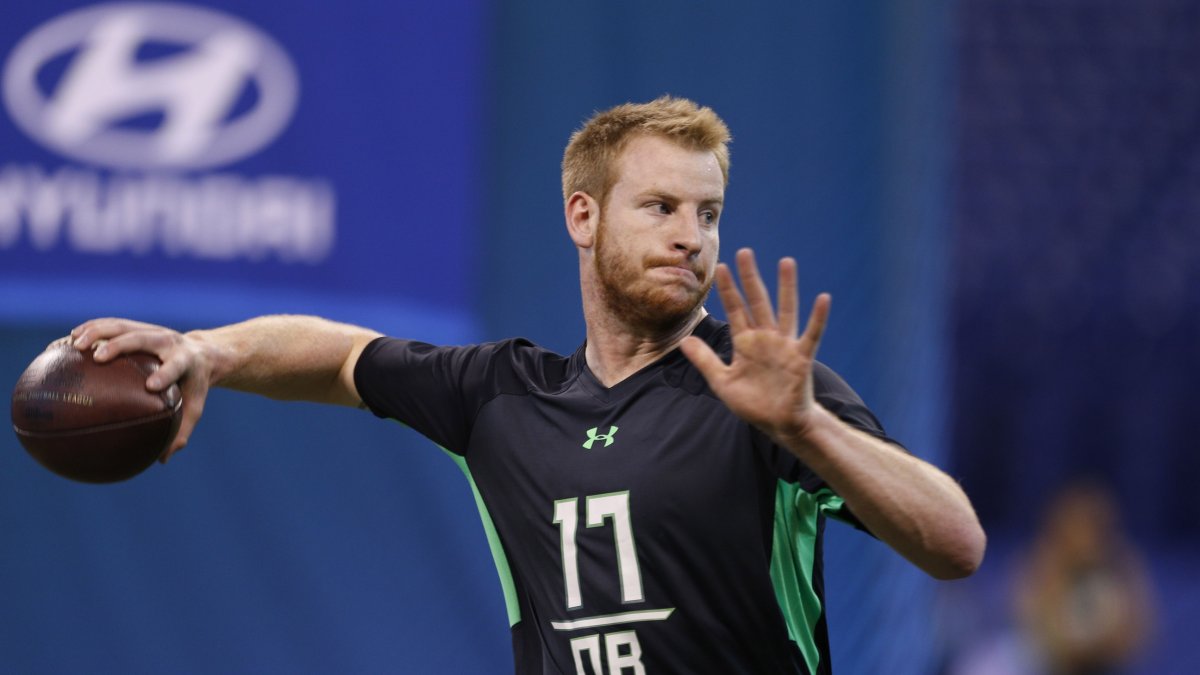The NFL Combine arrives in Indianapolis this week, bringing the best college prospects together for a week of measurements, drills, workouts, medicals and interviews. There’s a lot more to the Combine than the primetime televised drills, with some draft observers calling them the least important part of the event.
Remember, the reasons the NFL Scouting Combine is important:
1. Medicals
2. Interviews(Gap)
3. Testing drills
— Dane Brugler (@dpbrugler) February 19, 2020
The degree of importance of Combine drills and measurements depends on what you’re measuring to predict: draft position or actual player value. The former is known for all historical draft picks; the latter more estimation and shared understanding. One of the major advancements of player valuation we’ve made is translating our player grades to a universal metric of value — wins above replacement (WAR).
The relationship between draft position and WAR is fairly strong, but contrasting the two gives additional insight into systemic errors in over/underweighting certain traits, and how teams can more productively harness information gathered at the Combine.
Methodology
This analysis is built on strong work from former Harvard Sports Analysis Collective member Bill Lotter in his series detailing why the NFL Combine actually matters. Lotter used ridge regression to estimate the coefficients for the different Combine results and measure their importance in explaining prospects’ draft positions and value — the latter estimated using Pro Football Reference’s approximate value (AV) over players’ first three seasons.
Approximate value was a tremendous advancement in player valuation and the best public metric available to Lotter at the time of the analysis. The shortcomings of AV mostly relate to its focus on volume and the inability to differentiate between players on the same teams for certain position groups that lack traditional stats, such as offensive linemen. Even for position groups with more extensive traditional stats, such as tackles and sacks, their production can be more a function of luck and opportunity than adding value. This is where PFF’s WAR metric can truly add the proper context and weighting to the performance of each player. For my analysis, I’m contrasting WAR to draft position, in substitution of AV.
The plots below give the coefficient for each measurement or drill denominated by standard deviation within the position group. The draft positions and WAR for position groups are translated to percentile, giving both the same scale. Each bar below represents the amount of percentile movement you’d expect for a player with one standard deviation above or below the positional average. For timed drills, a negative coefficient is better. Lower times in the forty, three-cone and short shuttle generally translate to better draft positions and higher WAR over the first three seasons of a player’s career.
The sample for this analysis covers all players who participated in all drills or all but one drill from 2006 to 2017. For players who missed a drill, the value was input through regression on the remaining variables, with a discount under the assumption the drill was skipped with an expectation of underperformance. Players who participated in the combine and were not drafted are included in the sample with an assumed draft position of 300. And those players who never played an NFL snap are also included, with a WAR produced of zero.
Below each plot, I’ve included a table with the top-10 projections for positional WAR (first three seasons) in the 2006 to 2017 period, including the players’ Combine marks and their actual WAR produced.
Quarterback

Height and weight have been significantly more important in determining a quarterback’s draft position than early-career WAR, with each standard deviation above average moving expected draft position roughly four and three percentiles, respectively. The thought that quarterback size could be overrated is relatively new, crystallized with Baker Mayfield and Kyler Murray drafted consecutively at No. 1 overall the past two seasons.
Exclusive content for premium subscribers

WANT TO KEEP READING?
Dominate Fantasy Football & Betting with AI-Powered Data & Tools Trusted By All 32 Teams
Already have a subscription? Log in



 © 2025 PFF - all rights reserved.
© 2025 PFF - all rights reserved.